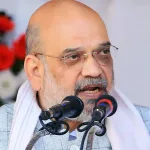BOOK REVIEW
There are some fundamental forces that govern the very sinews of a nation state which are the proverbial hidden arteries and veins on which rests the mighty edifice of its very being. They could be anything from a socio-political order to its rich historical past. The religious order of a nation state is one such potent force that has within itself a dynamite of power which if not handled in a sagacious manner has all the possibilities of subsuming this entity called as ‘Country’ and reducing it to a state of religious anarchy. Could it be then said that religion is the guiding light for a country in all parameters governing its rise in the comity of nations? Religion by quirk of its fate has been calling the shots in the Indian sub-continent since times of yore and was the single biggest denominator when it came to partitioning this south Asian entity in 1947. Heavily influenced by a plethora of factors that gave overriding preference to this facet, it was precisely the murky handling of such an important fundamental force by leaders of those times which eventually saw this sub-continent divided into two dominions of India and Pakistan with its attendant problems.
The biggest curse of politico-religious combo as mentioned above has been lugged by the erstwhile state of Jammu & Kashmir, which it continues to do so despite lapse of more than 75 years of its gaining independence. Not that rest of India was left untouched by the scourge of this religious frenzy in the heady days of partition, but the fact that even today there are forces inimical to religious harmony on both sides of the ‘Radcliffe line’ speaks of revisiting such tales so that lessons in sanity could be imparted to our progenies as pathfinders for peace and development. One such important milestone that has been achieved in this regard has been the seminal effort of 23 years by Dr Ramesh Tamiri in his masterpiece book—‘Pakistan’s invasion on J&K (1947-48) –Untold stories of victims’. This masterpiece of book was recently released by the honorary Lt Gov Mr. Manoj Sinha few days back in Jammu in the presence of a galaxy of literature luminaries.
Though the literary world is replete with books that have probed every nook and cranny of a tangled past of a beleaguered erstwhile state of Jammu and Kashmir, but nothing comes closer by even a whisker when seen in the light of the fact that a marvelous ‘Field work ‘spanning a humongous two decades has been the wont of this excellent book topped by a personal touch of the first hand victims narratives lending an ‘iron clad authenticity’. These two USP’s have been the seminal indicators of the author’s deep-rooted convictions towards unraveling a sordid drama whose players for their own dirty& ulterior motives made the hapless people of Jammu & Kashmir as mere pawns on the arena of international Geo-political chess board during the tumultuous days leading to the partition of India.
This literary creation —‘Pakistan’s invasion on J&K ( 1947-48) –Untold stories of victims’ has been conceived on the firmament of first hand close interactions with either the victims or their close relatives who were scattered all over the globe in the last seven decades and more. It is the story of those countless Dogra& Kashmiri Hindus as also the Sikhs who were trapped in a time line and area that was over-run by Pakistani invaders cum renegades directly sustained and watered by the erstwhile British colonial masters who still saw the state of J&K as an extension of their ‘Great Game’ aspirations. Neatly indexed into an introduction by the author and there after divided into various parts starting from part-1 till part-V, dwelling on events and major personalities ranging from ‘Pakistan invasion’ plan, its unraveling and finally the ramifications as it manifested in a wide arc from Muzzafrabad going all the way to Leh, Gilgit-Baltisthan eventually encompassing Jammu- Kathua region in its wake makes this book an instant hit.
This masterpiece of historical proportions has an ‘analysis and conclusion’ part written by the author with his own analytical insight and throws light on a multifarious of objectives of Pakistan in its invasion of J&K, the Indian response, difficulties faced by the HH Maharaja Hari Singh culminating into the impact of this invasion on the civilian populace of J&K.
The first chapter of ‘Pakistani invasion’ has some very revealing facts which corroborates the British complicity when Sir George Cunningham ,Governor of the NWFP wrote to Gen Robert Lockhart ,C-in-C of the Indian army about the preparations going on for the invasion of Kashmir. Gen Lockhart did not pass on the information to the GOI. Many months later when this fact came to light, he claimed that he had lost the letter.The GOI issued a press note on fourth of August, 1948 saying –quote—‘The information contained in this letter was the first authoritative information of impending troubles in Kashmir. Much before the invasion Gen Douglas Gracey of the Pakistan army communicated to Gen Lockhart on the telephone that armed tribesmen of NWFP were assembling in the Attock-Rawalpindi region. But Gen Lockhart did not inform GOI.
PM Nehru learned about it in December 1947. Similarly in 1955 when Gen Frank Messervy, the former C-in-C of Pakistan army visited India to attend a function of the Jat regiment at Ambala Brigadier LP Sen asked him if he knew about the preparations Pakistan was making to attack Kashmir. Gen Frank Messervy replied in the affirmative further saying that he was ordered to render all possible help to Col Akbar Khan. The intricacies of invasion plan had the macabre air of further sub-division into the ‘Peshawar plan’ and the subsequent ‘Lahore plan’. It contains the chilling details with which the Pashtun tribesmen were recruited at places like Rawalpindi, Kohat, Attock, Dir, Swat etc with numerous meetings between the then PM Liaquat Ali khan, Khan Abdul Qayoom khan, the Nawab of Mamdot with top British officers like Gen Frank Messervy and General Douglas Gracey in attendance to sort out the modalities of this recruitment rallies.
The chapter under the heading –‘The role of different elements’ lays stress on renegades like Latif Afghani, Capt Akram of Bagh /Poonch , Bihari mujahir Eqbal Ahmed, as also of ‘Furqan Battalion. The role of Indian journalist like GK Reddy, US engineer Major Russel K. Haight too has been given a fair amount of coverage in this part of the book. Part-2 heading with ‘Muzaffrabad district’of the book begins with the treachery that was enacted by the Muslim troopers of state forces of Jammu and Kashmir at Muzaffrabad against the CO of 4 JAK rifle Col Narain singh and most of his Hindu and Sikh soldiers who were butchered by their own Muslim compatriots along with the Mahsud tribesmen from NWFP.
Attacks on the state forces at Kishan Ganga bridge, Bhattika, Domel, as also the role of Lieutenant Labh Singh in rescuing the three thousand odd refugees to Bagh has been well elucidated in this chapter. The heroic resistance put up by the Sikh refugees at ‘Gurudwara Chatti Pad Shashi’ at Naluchi in Muzaffrabad and the saving of hundreds of women and girls at ‘Chamanlal’s haveli’ by the tribal chief Agha jan khan is the high point of this whole episode that ultimately culminated in their transportation to India. The next chapter lays stress on people who fled soon after the attacks commenced giving the examples of ‘Radhakrishan pandita’, Raghunath Zaroo, Sardar Sadhu singh, Maheshwar Nath Takru etc. The great escape of ‘’Bishambernath Sapru’ as also the fleeing of Kashmiri Pandits from Sarda in the dead of the night just shows the level of desperation that had engulfed the minorities during those hey days of mayhem.
The details dealing with Jammu province in the book has been covered in third part with titles like strong resistance at Kotli, massacre at Mirpur, a survivor’s story at ‘Alibeg camp, atrocities in Rajouri , Budhal, samote, and Daraj. The delay in providing relief to places like Bhimber, Palandri from Brigadier Paranjpye’s brigade too has come under sharp criticism in this part of the book. Part –IV turns its gaze to the high altitude region of Baltisthan , killings at Khapalu and Shigar as also the plight of Kashmiri Hindus at Drass in 1948. In the final part i.e. the fifth in the series this masterpiece details on issues like the famous Gilgit coup, the role of Major Brown of Gilgit scouts who was an outright stooge of both Pakistan and his own army i.e the British army. The cold blooded murder of 14 soldiers of 6 JAK rifles as narrated by Hony Capt Harpal Singh at Bunji by the Pakistani army says in so many words how centuries of trust that had been nurtured was shattered in mere days by the same officer Major Mirza Hasan Jarral who had fought shoulder to shoulder with his Hindu and Sikh comrades during the 2 WW. The post script dealing with the title of ‘Heart of desolation—A tale of tragedy and survival ‘by Kamal Nihjawan is truly the essence of this whole book that portrays the trials and tribulations with which this whole northern part of our country was left to its fate.
Having a very rich and select bibliography which runs into an impressive array of referential material that could boast of who’s who of personalities in those fateful days of 1947/48, this scholarly work has been a very deliberate attempt by Dr Ramesh Tamiri to put the things in their correct perspective. The importance of this book lies in the fact that it is solely based on oral testimonies with an excellent field work percolating down to the very roots of this tragedy.
The author has spent much mid night oil to get some real photographs of the protagonists of his stories that further puts him into the galaxy of those writers who have shot into the sublime world of ‘Super writers’ beyond the reach of an average author. The fact that it took him a record 23 years to reach and come out with such a fine treatise to the hapless victims of this holocaust, is itself a moving saga of human endurance.
This research oriented valuable book is just a past flash back to the events that are casting its shadows even to this day and time in the Indian sub –continent unabated. The cover page of the book has the photograph taken by Lieutenant Frank Leeson showing tribal irregulars from NWFP bound for Kashmir in 1947. Paged 342 in all, the book has both its hard cover and paperback version that has been published by ‘Thompson Press (India) and typeset at SK Babbu in Jammu. Distributed by famous Oberoi book service, Bahu Plaza Jammu and priced at a modest Rs 995 with its hard back cover and Rs 595 with a paperback version, I suppose it is a book for posterity and ought to adorn every book lover’s house not only for its rich historical past but also to shed light on the masses of India, Pakistan’s perfidy that continues even today.
(The writer is a retired army officer and can be approached on his email: [email protected])





